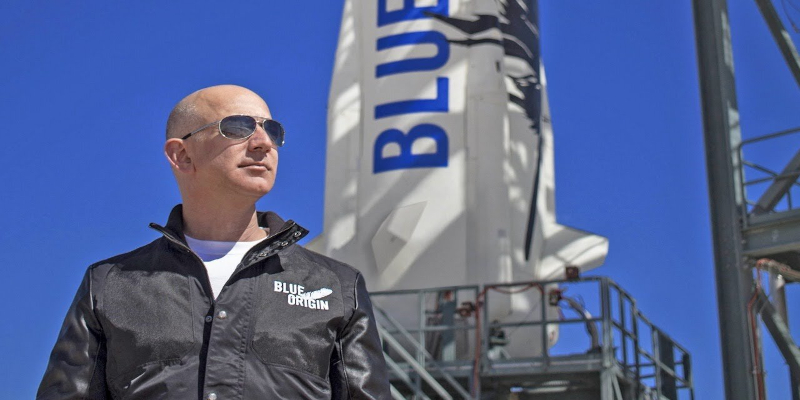Dharamshala, 19th July: The world’s richest man, Jeff Bezos, will become an astronaut on Tuesday when Blue Origin launches its first crewed mission, capping off a busy month for the fledgling space tourism business. The expedition comes only days after Virgin Galactic founder Richard Branson nearly defeated Amazon founder Jeff Bezos in a battle of billionaires. Blue Origin, on the other hand, has its sights set higher, both in terms of the height to which its reusable New Shepard ship will ascend in comparison to Virgin’s spaceplane and in terms of its long-term goals.
Blue Origin was launched by Jeff Bezos in 2000 with the idea of one day creating floating space colonies with artificial gravity where millions of people may work and dwell. Today, the business is working on the New Glenn heavy-lift orbital rocket, as well as a Moon lander that it hopes to contract with NASA under the Artemis program. Wally Funk, a pioneering female aviator who will become the world’s oldest astronaut at the age of 82, and Dutch adolescent Oliver Daemen, the company’s first paying client, who will become the world’s youngest astronaut, will join Bezos on the totally autonomous journey.
Jeff Bezos’ brother Mark, a businessman who runs the Bezos Family Foundation and volunteers as a firefighter, completes the four-person team. They’re best buddies, and Jeff documented the moment he asked his younger brother to join him in a viral Instagram video last month. The mysterious winner of a $28 million auction for a seat, who had “schedule conflicts” and will fly on a future flight, has requested anonymity, according to the business. New Shepard will drive towards space at speeds above Mach 3 utilizing a carbon-free liquid hydrogen/liquid oxygen engine after lift-off. The astronauts unbuckle and experience weightlessness as the capsule separates from its rocket.
As the spacecraft reaches 65 miles in height, the crew will spend a few minutes above the Karman line—the internationally acknowledged border between Earth’s atmosphere and space—at 62 miles altitude (100 kilometers) (106 kilometers). From enormous windows that cover a third of the cabin’s surface area, they will be able to enjoy the planet’s curvature—and the inky black of the rest of the universe. The booster returns to a landing platform slightly north of its launch site, while the capsule freefalls down to Earth before deploying three massive parachutes and a thruster to softly land in the west Texas desert.

